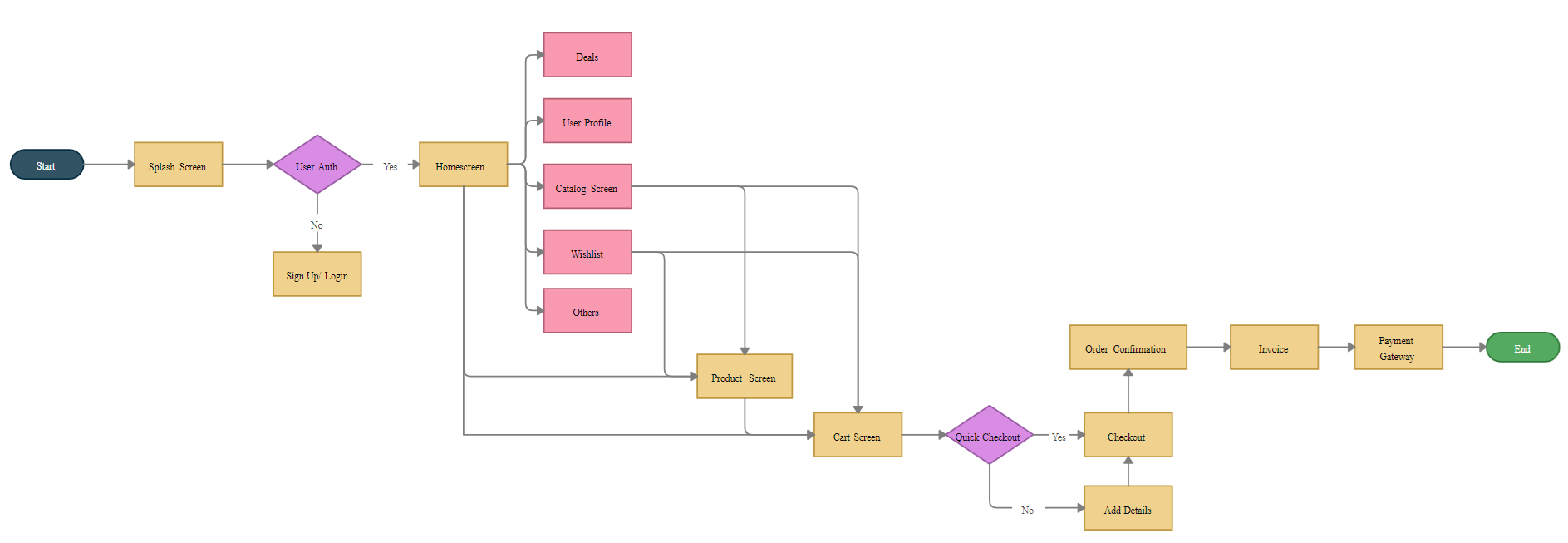This case study explores the development of an e-commerce
application using the MERN stack (MongoDB, Express.js, React.js,
and Node.js) while implementing the MVC (Model-View-Controller)
architectural pattern. The goal is to demonstrate how the MVC
pattern can be effectively utilized in a MERN-based project to
create a scalable and maintainable e-commerce platform.
Implementation Details
Model Layer
-
User Model:
Defines user schema including username, email, password, and
role.
-
Product Model:
Defines product schema including name, price, description,
category, and stock quantity.
-
Order Model:
Defines order schema including user, order items, shipping
address, payment method, and order status.
// User Model (models/User.js)
const mongoose = require('mongoose');
const bcrypt = require('bcryptjs');
const userSchema = mongoose.Schema({
name: { type: String, required: true },
email: { type: String, required: true, unique: true },
password: { type: String, required: true },
isAdmin: { type: Boolean, default: false }
}, {
timestamps: true
});
userSchema.methods.matchPassword = async function (enteredPassword) {
return await bcrypt.compare(enteredPassword, this.password);
};
const User = mongoose.model('User', userSchema);
module.exports = User;
View Layer
React Components: Structured in a way that
separates concerns, with components for the homepage, product
listing, product details, cart, and admin dashboard.
Redux: Used for managing application state,
including user authentication status, product data, and cart
contents.
// ProductList Component (components/ProductList.js)
import React, { useEffect } from 'react';
import { useDispatch, useSelector } from 'react-redux';
import { listProducts } from '../actions/productActions';
import Product from './Product';
const ProductList = () => {
const dispatch = useDispatch();
const productList = useSelector((state) => state.productList);
const { loading, error, products } = productList;
useEffect(() => {
dispatch(listProducts());
}, [dispatch]);
return (
{loading ? (
Loading...
) : error ? (
{error}
) : (
{products.map((product) => (
))}
Controller Layer
Express Routes: Define API endpoints for
handling CRUD operations on products, user authentication, and
order processing.
Middleware: JWT middleware for protecting
routes that require authentication.
// Product Controller (controllers/productController.js)
const asyncHandler = require('express-async-handler');
const Product = require('../models/Product');
// @desc Fetch all products
// @route GET /api/products
// @access Public
const getProducts = asyncHandler(async (req, res) => {
const products = await Product.find({});
res.json(products);
});
// @desc Fetch single product
// @route GET /api/products/:id
// @access Public
const getProductById = asyncHandler(async (req, res) => {
const product = await Product.findById(req.params.id);
if (product) {
res.json(product);
} else {
res.status(404);
throw new Error('Product not found');
}
});
module.exports = {
getProducts,
getProductById,
};
This e-commerce application case study demonstrates the
practical implementation of the MVC pattern using the MERN
stack. By separating concerns into models, views, and
controllers, the application remains modular, scalable, and
maintainable. This approach allows developers to manage complex
application logic while providing a responsive and dynamic user
experience.

